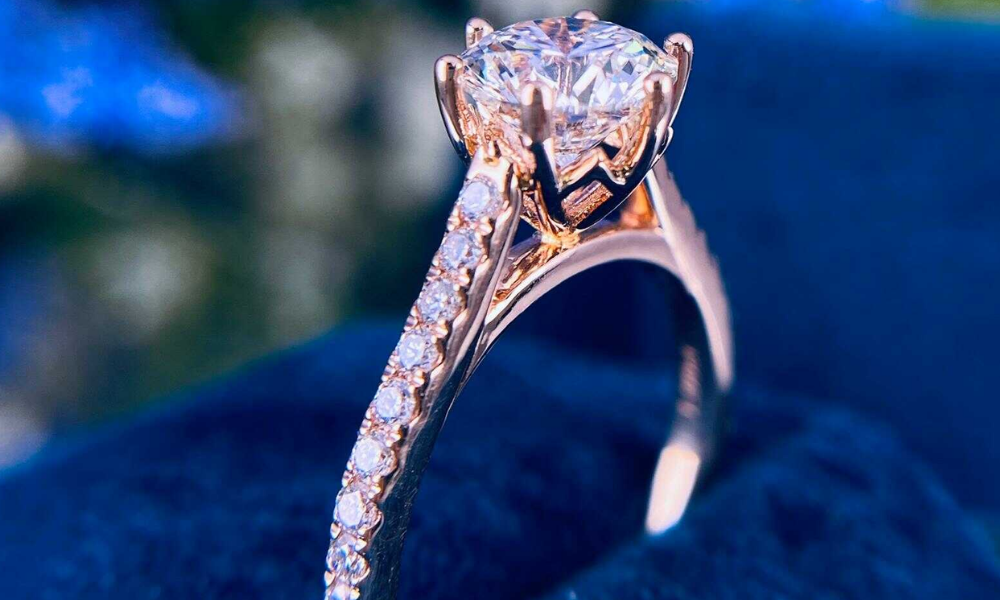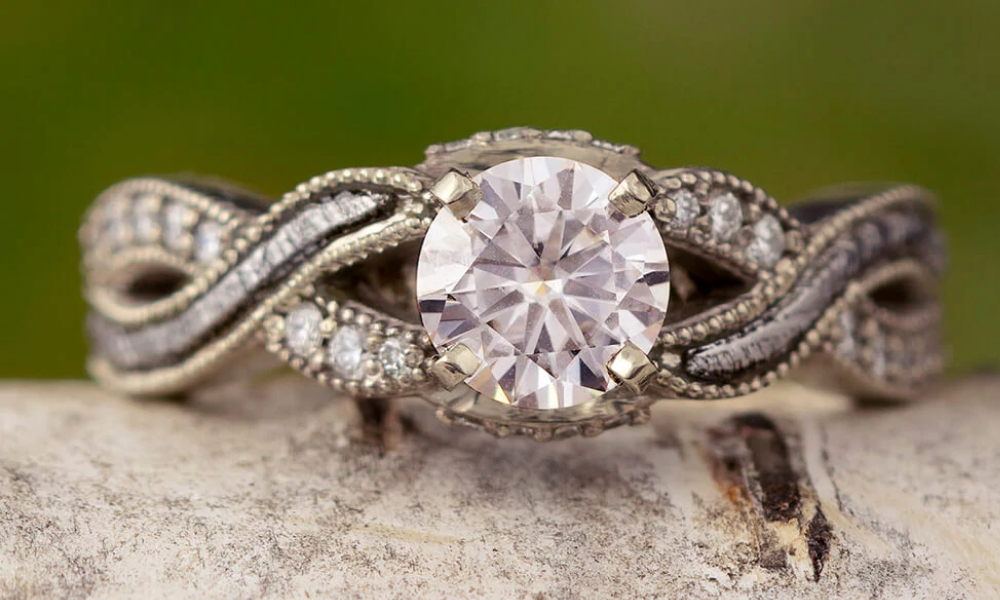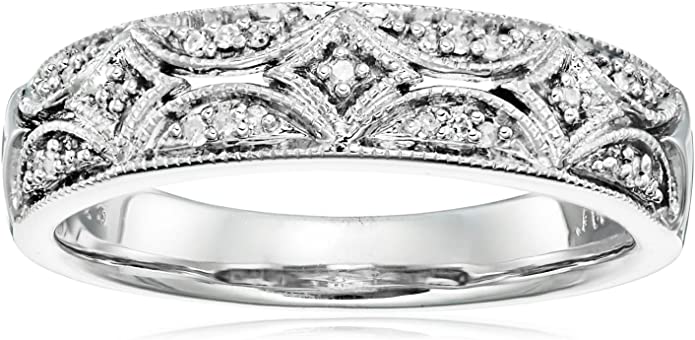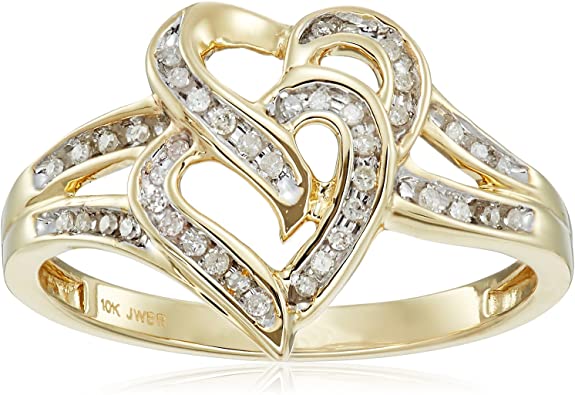The reasons why you would want to purchase genuine diamond engagement rings for women are apparent. Perhaps you’ve entertained purchasing an engagement ring for yourself, but what about your significant other? You want her to be thrilled with it! Remember, this is the most expensive purchase you will make, and you want her to enjoy it as much as you do!
Go to a jewelry store that specializes in diamonds for more information. The customer service representatives at these locations will be able to provide you with expert guidance. In addition, you will receive the best possible price for the item. James Allen and the Blue Nile are two of the most reputable diamond retailers globally. They have a large selection and competitive pricing and their customer service representatives are among the best in the industry. And don’t forget to shop around and compare prices between various stores.

Real Diamond
It’s unlikely that you’ll hear a gemologist with specialized training refer to a diamond as a “real diamond” or use the word “real” to describe any material. Rephrasing the question will help you be a well-informed shopper, so do it! Suppose you’re not familiar with the structure and components. It’ll lead you to believe that a gemstone is a diamond when it’s an entirely different stone, such as cubic zirconia or moissanite. As a result, it is critical to understand how to distinguish a fake diamond.
Since the beginning of time, diamonds have been the most famous gem used in engagement rings. However, with synthetic diamonds and diamond simulants, it is only natural for people to inquire about genuine diamonds. “Real” is not a term used in the gemological industry. However, it is a significant one from the consumer’s perspective.
Diamond
According to gem professionals, the chemical composition and crystal structure of a diamond are distinguishing characteristics of a diamond. Diamond is almost entirely made up of a single element: carbon, a chemical compound. It is formed under extreme conditions of high temperature and pressure, which cause the carbon atoms in its structure to bond remarkably consistently in all directions. Another mineral, graphite, also contains only carbon, but the processes by which it is formed and the mineral’s crystal structure are vastly different. As a result, graphite is so soft. Can use it to write with, whereas a diamond is so hard. Can only scratch it with another diamond.
This definition applies to both naturally occurring diamonds and diamonds that are created in a laboratory when it comes to diamonds. It does not apply to any other materials used to impersonate diamonds.
In other words, when you ask a jeweler for a natural diamond, you could be asking for a diamond. Formed naturally or one that. Created in a laboratory – because both materials qualify as diamonds. According to Federal Trade Commission (FTC) guidelines, reputable jewelers avoid using the term “real” altogether and make a clear distinction between natural and synthetic diamonds as well as the difference between diamond stimulants and diamonds (or imitations).
Natural Diamond
Diamonds are a natural wonder. They formed billions of years ago in the mantle and were brought to the surface by volcanic eruptions. Kimberlite and lamproite are two magmas that sometimes carry diamond rough. Quickly the magma solidified into a diamond-bearing kimberlite pipe.
Most diamonds are found in kimberlite, but the Argyle mine in Australia is a lamproite deposit. Large open-pit mines are dug to recover the diamonds, and the companies switch to underground mining to capture the last diamonds as the pipes narrow.
Some diamonds end up in rivers, streams, and even the ocean due to erosion releasing their host rocks. Alluvial mining is digging and sifting through mud, sand, and gravel to find diamonds. While small-scale miners work river sediments, large boats scour the ocean sands off Namibia’s coast for fine diamonds.
Turning Rough Diamonds into Polished Gems
The diamonds found have survived a gruesome birth and a harrowing journey to the Earth’s surface. To find one rough diamond, diamond mining companies must remove a million pieces of the host rock. The rough diamonds are sorted into categories based on their size, shape, clarity, and color. The miner may choose to cut a finished diamond from the rough or sell it to dealers and manufacturers.
Rough diamonds are frequently shipped to cutting centers in India, Israel, New York, Antwerp, China, and Thailand. To transform a piece of rough into a highly polished faceted diamond, highly skilled diamond cutters frequently use cutting-edge technology, such as lasers. The majority of finished diamonds are sent to grading laboratories according to the GIA 4Cs standard, which includes color, clarity, cut, and carat weight. Every diamond will have its characteristics; no two will be alike.
Treatments with Diamonds
Some manufacturers may attempt to change the color or clarity to make it more appealing and marketable. A variety of methods are used to alter the color of diamonds, ranging from simple ones such as coloring the girdle facets with a permanent marker to more sophisticated ones such as covering facets with an optical thin film, exposing the diamond to radiation, or subjecting it to annealing at high pressure and high temperature. Fracture filling is the most frequently used method of improving clarity. All of these procedures may enhance the appearance of the diamond, but the seller is required by law to disclose that the Federal Trade Commission has treated the diamond.
Is it any surprise that so many people choose “real” diamonds to symbolize love and commitment because of their timelessness, resilience, and durability? Ask for a GIA Diamond Grading Report if you’re thinking about buying a natural diamond for an engagement ring. The report proves that the diamond is natural and of the quality described by the seller, providing you with the crucial information you need to make an informed decision. A GIA Synthetic Diamond Grading Report is your assurance that the material is diamond and not an imitation if you choose a lab-grown diamond.
Check Out Some Beautiful Diamond Engagement Rings
Features
- Rose gold ring featuring heart-shape centerpiece and diamond accents framed in milgrain trim
- All our diamond suppliers confirm that they comply with the Kimberley Process to ensure that their diamonds are conflict-free.
- Imported
Is there any Monetary Value to Real Diamonds?
The price of diamonds fluctuates in the economy, just like any other high-end item does. Diamonds can increase in value at times, and they can also decrease in value at other times. Regardless, pre-owned diamonds are typically sold for a slight discount on their original retail prices. In most cases, a diamond has a resale value that is 20-60 percent higher than the original purchase price. According to a survey conducted by Greenwich St. Jewelers, the average price of a diamond engagement ring in the United States is 5,500 dollars. One-quarter of participants said they spent between $1,000 and $3,500 on their engagement ring in the survey. For those who live in or near major cities, spending a little more money may be necessary. This is because most diamond rings in these cities are larger and more expensive.
What is the Best Way to Tell if a Diamond is Real?
Place the stone on the dot so that the flat side faces up. Look down through the diamond’s pointed end with your eyes trained on the paper. It is a fake gemstone if there is a circular reflection inside the gemstone when it is held up to the light. Unless you can see the dot or a reflection in the stone, you can be sure the diamond is genuine. Diamonds are a crystallized form of carbon that is either entirely or nearly wholly pure. They are the most challenging substance on the planet. According to the Federal Trade Commission, if a diamond comes from the Earth or is created in a laboratory, both are considered “real” or “genuine” because they are composed of carbon in a crystallized form.
What is the Name of a Real Diamond?
Synthetic diamonds are diamonds that have been synthesized artificially.
Cultured diamonds are also referred to as cultivated diamonds, lab-created diamonds, and artificial diamonds, among other terms. In contrast to natural diamonds formed deep within the Earth, synthetic diamonds are created in a laboratory. In essence, synthetic diamonds are the same as natural diamonds. However, synthetic diamonds are created above ground through artificial means, unlike natural diamonds. A natural diamond is composed of carbon and is the hardest natural substance known to man on the planet. Natural diamonds are formed over one to three billion years, at a depth of at least 85 miles below the surface of the Earth’s mantle, under natural conditions of extremely high pressure and extreme heat.
Do Real Diamonds have a Dazzling Radiance in the Dark?
To maximize light, draw it in, and reflect it out, diamonds are cut so that they shine brightly like a billion stars in the sky. Any Diamond’s life and beauty are derived from its sparkle. “No, diamonds do not sparkle in the dark,” the answer to the question concludes. When using a flashlight to determine whether or not a diamond is genuine, hold the flashlight vertically with the beam pointing upward and place the stone upside down on the lens. Study the passage and exit of light from the flashlight as it passes through and through the stone.
In What Colors do Real Diamonds Appear?
When held up to the light, a natural diamond appears grey and white on the inside (brilliance), and it can reflect rainbow colors (fire) onto other surfaces when exposed to heat. When a fake diamond is held up to the light, the colors within the stone will appear to be a rainbow. A genuine diamond will reflect both the colors of the rainbow and white light. It is not a genuine diamond if you only receive one of the two facets.
Conclusion
Consider the factors that are important to you when purchasing an engagement ring. You might prefer a larger or smaller center stone, or you might want to buy the best-cut diamond. Perhaps you’d like to learn about the four C’s of diamonds. Thinking about your budget and how much you can spend is the best way to figure out what matters most to you. After that, go shopping! A moissanite engagement ring is another fantastic option. This stunning piece is made of 14-karat white gold and features a round-cut moissanite stone with a bridal halo of 71 round-cut diamonds. It’s the ideal choice for your lady, and she’ll be able to commemorate her engagement with a ring she’ll adore. There are numerous options when it comes to selecting a real diamond engagement ring for her.













